People
Art Historian Darby English on Why the New Black Renaissance Might Actually Represent a Step Backwards
English is the author of "To Describe a Life" and "How to See a Work of Art in Total Darkness."
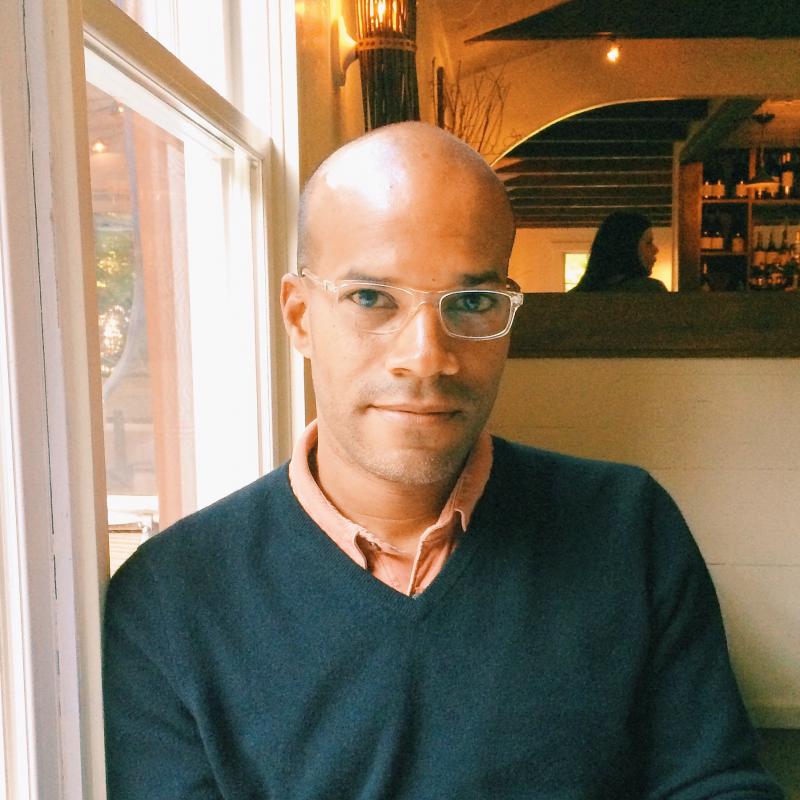
English is the author of "To Describe a Life" and "How to See a Work of Art in Total Darkness."

Folasade Ologundudu

This article is part of a series of conversations with scholars engaged with Black art for Black History Month. See also Folasade Ologundudu’s interviews with Richard J. Powell, Bridget R. Cooks, and Sarah Lewis.
***
Darby English understands the power of art. The author of To Describe a Life: Notes from the Intersection of Art and Race Terror (2019) affirms its place in our lives during this period of social turmoil and incessant racial violence in America. Timely, poignant, and ruefully truthful, English’s work on African American art history and thought challenges us to remember the capacity art has to change not only our lives but the ways in which we see ourselves and the world at large.
Revered in the field as a thought-leader, the Cleveland-born scholar is currently the Carl Darling Buck Professor of Art History at the University of Chicago. In 2010, he received the University of Chicago’s Quantrell Award for Excellence in Undergraduate Teaching, the nation’s oldest such prize.
With a career in academia spanning more than two decades, English has published numerous articles, books, and lectures. In addition to To Describe a Life, these include 1971: A Year in the Life of Color (University of Chicago, 2016) and How to See a Work of Art in Total Darkness (MIT, 2007). He has also co-edited volumes including Among Others: Blackness at MoMA, with Charlotte Barat (MoMA, 2019) and Art History and Emergency, with David Breslin (Yale, 2016).
Recently, English shared with me his reflections on our current moment, how art has changed over the past several decades, and why generalizations of Black art are so problematic.
You are very keen on the problems of generalization within the art world with regards to how African American art is taught, critiqued, and discussed. What is your biggest problem with these generalizations? How, in your opinion, can historians work to remove and/or reduce their use of generalizing?
My issue with generalization is that it feels an irresponsible way to respond to art’s diversity and specificity. If you understand art as something different from yourself, as the work of another consciousness, then it is very hard to generalize about it. Art reflects the immense variation in the field of experience, offers us opportunities to explore and come to terms with that plenitude. Accounts of art that suppress variation, that are nonchalant about those precious opportunities, need to be resisted.
I’m not a big fan of “always,” but Black artists and their advocates have an “always” problem. Assessments of what Black artists do overwhelmingly boil down to one or two things: they show us things about ourselves or they show others things about us. Once upon a time, this discursive bondage, this limitation, was externally imposed: it was a way for anti-Black racism to keep the conceptual and practical ranges as narrow as possible. Today we produce it internally, replicating in our own image a situation where the range of subjects Black artists can speak to is shockingly narrow—far narrower than their actual engagements indicate—and we discuss practitioners as though they were interchangeable with one another.
We forego opportunities to disrupt this demeaning redundancy. Why? If all Black artists do the same thing, then why should anyone take a given Black artist more seriously than they take an Advil?
Art history as many know it has traditionally been told through the eyes of white males. In your opinion, what can African American scholars—men, women, queer, and non-binary—bring to the field of study?
In fact, other voices have been setting alternative agendas for the practice of cultural history for over half a century. For me, some of the most affecting interventions have been made by feminist and queer scholars and other cultural producers at the frontiers of identity. I especially value those which study operative limitations, describe them precisely, and try to go beyond them. Crucially, my most treasured resources didn’t let the bad news that the analysis generated circumscribe all thought and action; instead, they acted on possibility and insisted on creativity. I couldn’t do what I do if they weren’t there, being formidably historical, insisting on being read, exerting good pressure.
But obviously much work remains. One way to move a field is, first, to recognize that an area of study is usually way broader than the existing maps indicate, and, second, to make use of the space you gain upon that recognition. A richer and broader framework is readily available, and this is just something you feel, I think, when you try to look at everything and read widely. It helps to remember that if you’re doing it, then it’s happening in your area of study. If your work manages to advance thought one half-inch, then you’re moving the field you came to move.
What are some of the biggest changes you’ve seen in the study and participation of African American studies and African American art history in the past 20 years?
The single biggest change is a narrowing. When I think about where these fields were 20 years ago, from, say, 1999 to 2003, the comparatively wider range of activity staggers me. The art and the ideas were so much more challenging. There was so much more nuance in the conversation. There was more comfort with discomfort.
I don’t know if you know about “Freestyle,” a Studio Museum show by Thelma Golden and Christine Y. Kim. Roughly speaking, the show said, ‘Look how many different things Black artists are doing right now! How do we deal with this?’ The show registered the undeniable emergence of a thrilling range of tones and textures. You couldn’t really like or dislike “Freestyle” as a whole. That’s how full of difference it was. It acknowledged and embraced fragmentation and multiplicity in the cultural field. Within “Freestyle,” you had to negotiate form to get to meaning, and meaning was so precarious that you had people wondering if things were “post-Black” somehow. A formal crisis rooted in diversity engendered a conceptual crisis. There had to be a conversation.
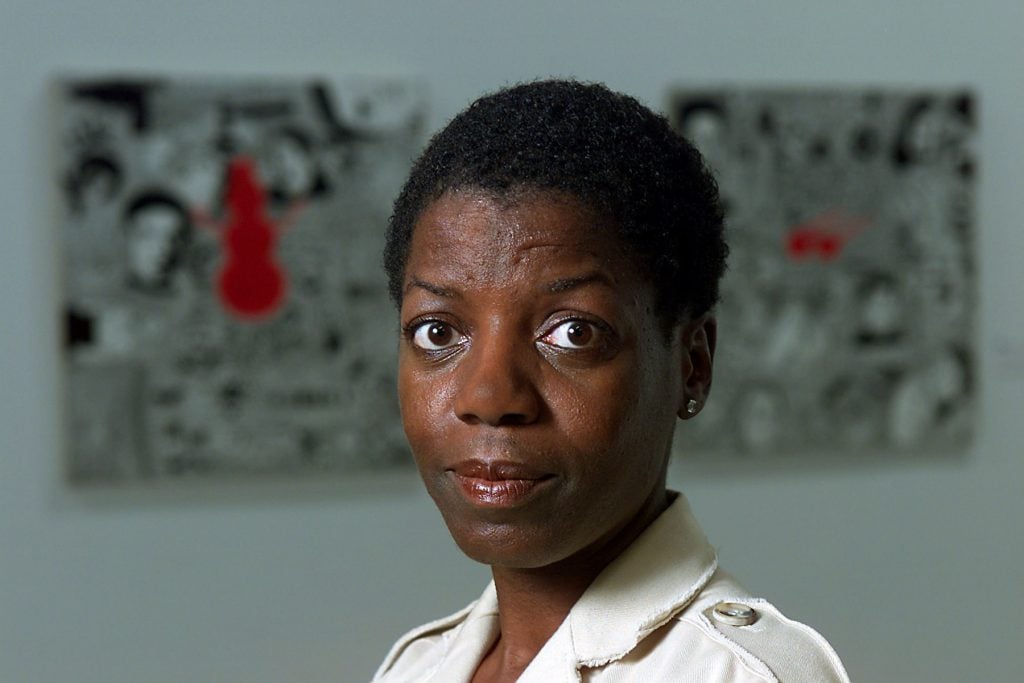
Thelma Golden, curator of the exhibition “Freestyle,” in the lead up to its opening at Santa Monica Museum of Art, September 29, 2001. Photo of Golden, September 27, 2001. (Photo by Ken Hively/Los Angeles Times via Getty Images)
It scandalizes progressive sensibility to think that things were so much more complex in this domain a generation ago than they are now, but there you have it. Today it’s a 24/7 art cartoon on every channel. The leading exhibition and publishing paradigms reduce everything to one-note. Because the core project is communication, anything that resists the art communications apparatus fails to leave a mark. An ordinary encounter in the art world is an encounter with charisma and content. In a situation like that, form is an obstruction or a distraction. And, indeed, form has become increasingly irrelevant during these 20 years. When real art comes along, its import disappears in a message about the part that’s on point.
You mentioned to me in a previous conversation that we need a different language to talk about a Black artist who’s working in abstraction versus figurative art and representations of Blackness. Can you elaborate on this? What is that different language you’re speaking of?
Our language doesn’t need to be different, but it does need to expand and to flex. It needs to be able to sympathetically imagine another kind of project emerging into Black representational space, one that doesn’t necessarily share its objectives and strategies.
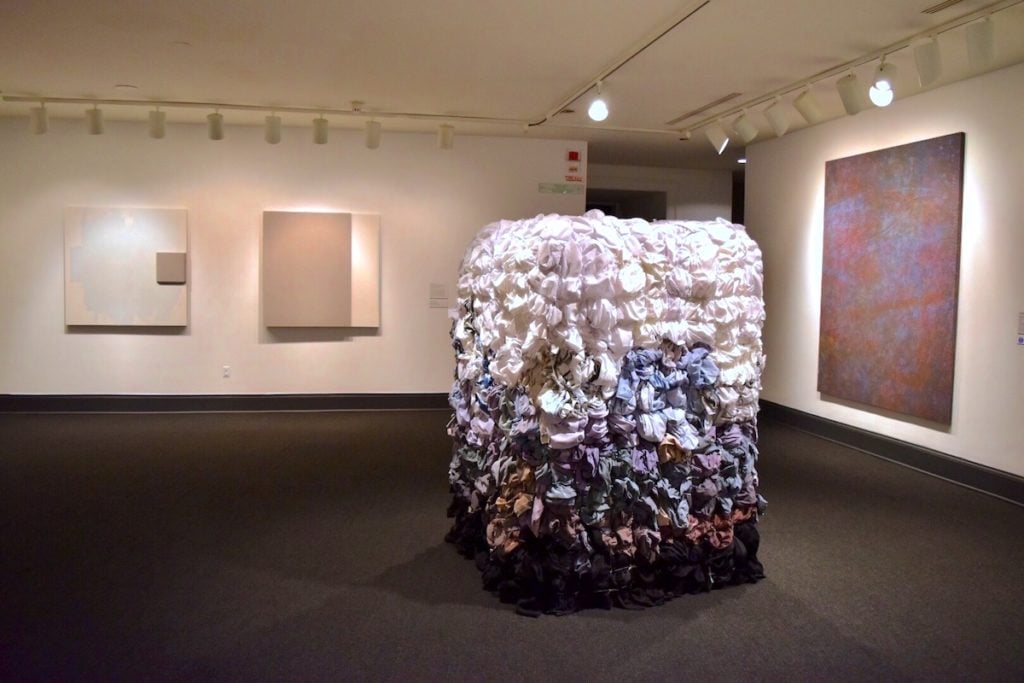
Installation view of “Magnetic Fields: Expanding American Abstraction, 1960s to Today” with [left to right] works by Jennie C. Jones, Shinique Smith, and Howardena Pindell. (Photo by Ben Davis.)
But most everything you can read about Black artists doing abstraction eradicates this complexity to produce a more cohesive, less conflictual narrative about race and representation. I’m afraid Black abstract artists won’t get the viewing and understanding they deserve until we relinquish the very categorial ways we look at things and categorical tones we adopt to produce and share culturally-specific knowledge. The true radicality of that choice needs a facilitating environment which doesn’t exist yet.
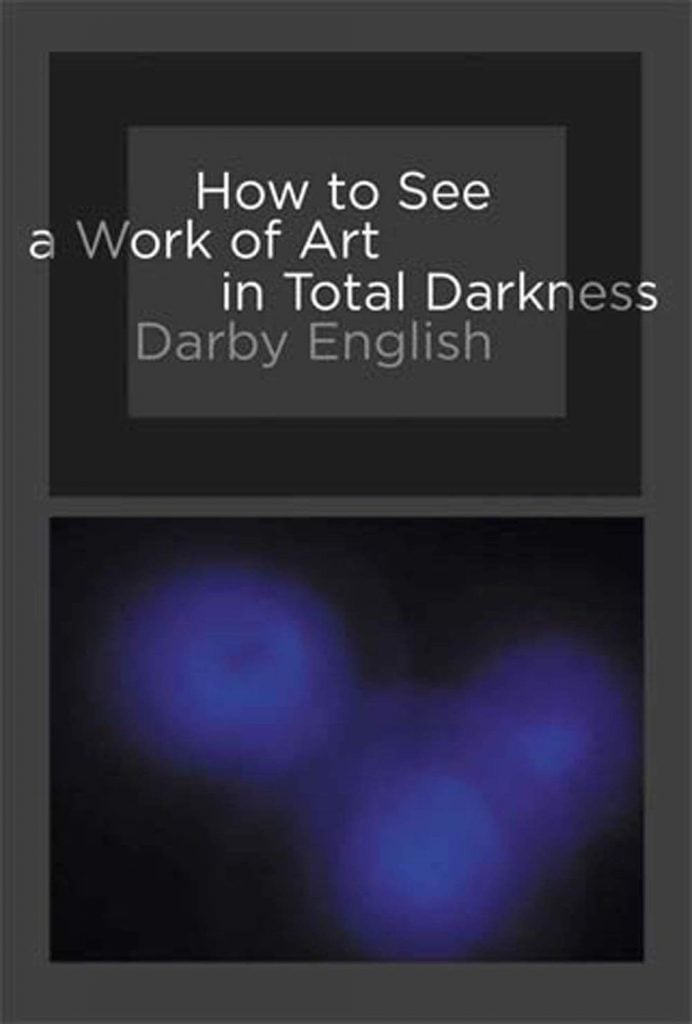
Cover of Darby English’s How to See a Work of Art in Total Darkness (MIT Press, 2010).
In your book published in 2007, How to See a Work of Art in Total Darkness, you deftly argue that Black art today is almost uniformly understood in terms of its Blackness, with audiences often expecting or requiring it to represent the race. Do you think we’ve seen a tipping point of this in the past 10 to 15 years with a sharp rise in the Black figure? Or is there a widening space of more Black artists challenging themselves today to work outside the white cube of race and racial issues through figuration?
This is a hugely complicated question. On the one hand, the figure is a sign of life. And in a protracted series of seasons of death, signs of life are utterly crucial and need to be honored absolutely.
On the other hand, the proliferating figure is a clear market indicator: when there’s a taste for Black art, or Blackness as art, the figure—which generates satisfying, unthreatening presence effects and goes down easy—has a great fucking time. So you need to be able to make distinctions between, say, figures of Black vitality, magical commodity figures, figures that challenge the terms of their commodification, and figures that do important representational work precisely because they’re hard to “figure out,” which is how we consume culture.
To me, the worrisome thing about a flood of figuration is the time and resources we aren’t spending on the part of us we can’t image, the part we won’t sell, the mysteries, the fractions, the freaks. So whenever I see a figure, the first thing I need to do is to determine what it is and what it’s for. Is it a good witch or a bad witch?
This speaks to ideas of consuming Black bodies, but in a different way, right, profiting off of them in a way that’s deeply rooted in slavery and oppression.
Yes, right. I mean, you’re not only profiting off of the bodies; you’re profiting off of the consumption itself—you’re working both sides of the table.
Which is not different than what was happening, through slavery—like it’s the same exact thing. And when you think about how slave owners were able to get loans from banks based on how many slaves they had so you could make money on both sides. You can make money through their hard labor, but you could also make money through their bodies in a different way. It’s just sick.
Yes, it really is.
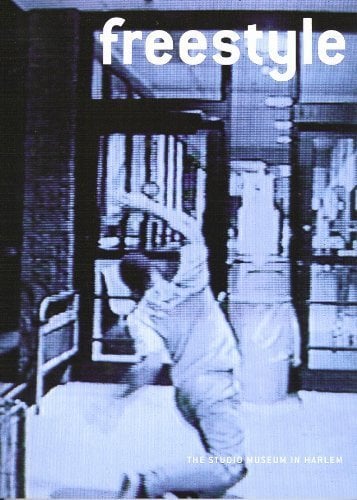
Cover of the catalogue for Freestyle, a 2001 exhibition at the Studio Museum in Harlem.
Which sounds and feels very different than what you talked about earlier with regards to the “Freestyle” exhibition, the idea that 20 years ago Black artists were showing so much range.
A lot of people had gone off the grid. And when you caught up with them, an exciting confusion resulted. You had not lost hold of cultural specificity, but there was a sense of fresh possibility, a really expansive possibility.
What’s changed?
Well, a lot. There is a lot more clear, out-in-the-open evidence that the system is rigged against POC. And there’s a corresponding awareness of the scope of work. It’s full-time work just to feel okay; being actually creative is icing on the cake. But I think we’ve lost hold of the part of art that’s centrally involved with challenge, with the pursuit of surprise, with the widening of tolerance. To my very limited view, the last thing we can afford is to place obstructions in our own paths by promoting harebrained representation, valorizing art that says what everybody already knows, and publishing words that don’t say anything. This, to me, seems a terrible waste of very extremely hard-won resources and opportunities. Who goes to art seeking their own reflection? That’s what mirrors are for.
Correction, 3/3/21: An earlier version of this article incorrectly credited Hamza Walker with co-curating “Freestyle” at the Studio Museum. In fact, the co-curator was Christine Y. Kim.